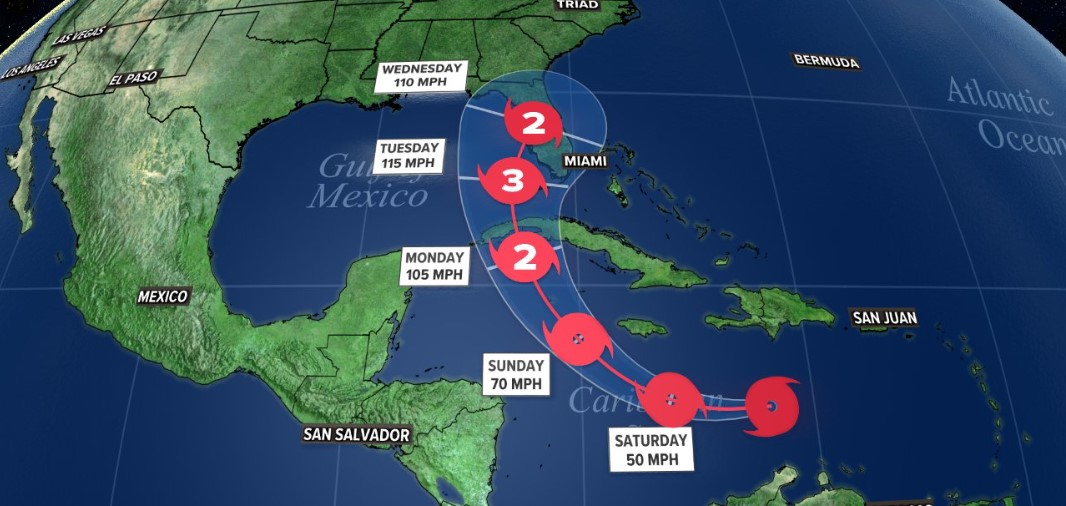Tropical Storm Beryl, predicted to become the season’s first hurricane, is expected to pass near the southern tip of Barbados on Sunday. Currently, Beryl has maximum sustained winds of 60 mph (95 km
Forecasters anticipate that Beryl will strengthen into a hurricane when it nears the island, bringing heavy rains, strong winds, and a dangerous storm surge.
A hurricane watch has been issued for Barb/h) and is moving west at 21 mph (34 km/h), as the National Hurricane Center reported. the storm’s center is forecast to pass 26 miles (42 km) south of the island.
After Barbados, Beryl is projected to travel south of the Dominican Republic and Haiti, over Jamaica and the Cayman Islands, and towards Mexico’s Yucatán Peninsula.

Meteorologists attribute the storm’s development to below-normal wind shear, which reduces disruptive early summer winds, according to the Weather Channel.
Barbadian Prime Minister Mia Mottley has urged residents to prepare thoroughly, given Bridgetown’s ongoing Twenty20 World Cup cricket final. Home Affairs Minister Wilfred Abrahams emphasized that standard hurricane preparations, such as removing boats and clearing drains, are in effect.
Beryl is the first named storm of the Atlantic hurricane season, which runs from June 1 to November 30. It follows Tropical Storm Alberto, which recently caused flooding in parts of Texas and northeastern Mexico. Beryl’s early formation in the season and east of the Caribbean is unusual, as storms typically develop in mid-August.
The National Oceanic and Atmospheric Administration (NOAA) has forecast an “above average” hurricane season, with 17 to 25 storms and up to 13 hurricanes.
The anticipated increase in storm activity is linked to La Niña, which enhances Atlantic hurricane formation by decreasing atmospheric stability, making it easier for storms to develop and intensify.

